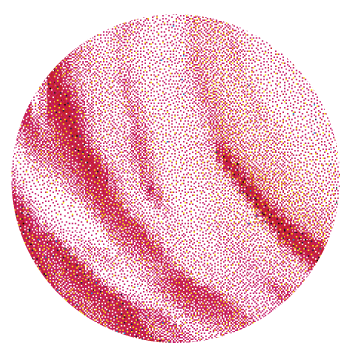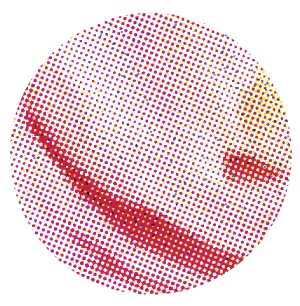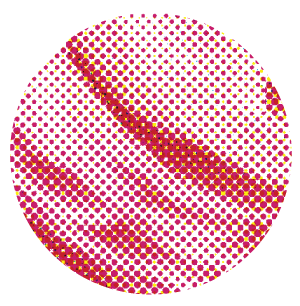Micro Screening in Offset Printing – Because Details Matter

Micro Screening – Because Details Matter
In the world of print, achieving exceptional image quality is crucial. Whether crafting captivating photographs, intricate graphics, or vibrant materials, the ability to capture fine details and reproduce colors accurately is essential. Enter micro screening, a powerful technique revolutionizing print quality.
Micro screening breaks down images into minuscule dots or pixels, precisely arranged to create smooth gradients, fine details, and accurate colors. This meticulous process ensures sharp, vibrant, true-to-life prints.
Unlike traditional screening methods, which rely on larger dots and coarser patterns, micro screening utilizes much smaller dots and finer patterns, allowing for greater detail and resolution. By leveraging advanced algorithms and software, micro screening optimizes dot placement, smoothing transitions between colors and minimizing unwanted artifacts like moiré patterns.
The Benefits of Micro Screening:

Superior Image Quality
Micro screening enables the reproduction of images with exceptional clarity, sharpness, and detail, elevating the overall quality of printed materials.
Enhanced Color Accuracy
With micro screening, colors are reproduced with remarkable accuracy, ensuring that prints faithfully capture the nuances and subtleties of the original artwork or design.
Reduced Moiré Patterns
Micro screening helps minimize the occurrence of moiré patterns, those unwanted interference patterns that can detract from the quality of printed images, resulting in cleaner and more professional-looking prints.
Increased Print Resolution
By utilizing smaller dots and finer patterns, micro screening allows for higher print resolutions, making it possible to reproduce fine text, intricate graphics, and high-quality photographs with unparalleled clarity and precision.
Versatility and Flexibility
Micro screening is compatible with a wide range of printing substrates and ink types, offering printers greater flexibility in meeting diverse printing requirements and delivering exceptional results across various applications.
Types of Screens
Click each image to for more detail.
Stochastic Micro Screen:
Stochastic screening, also known as FM (frequency modulation) screening, utilizes random dot patterns of varying sizes instead of traditional halftone dots. These dots are dispersed evenly across the image, creating a more natural and continuous gradient.
- Advantages:
- Improved image quality: Stochastic screens produce smoother gradients and finer details compared to traditional halftone screens, resulting in higher-quality prints.
- Minimized moiré patterns: By eliminating regular dot patterns, stochastic screens reduce the occurrence of moiré patterns, especially in high-frequency areas.
- Increased color fidelity: Stochastic screening allows for better color control and accuracy, leading to more vibrant and lifelike prints.
Hybrid Standard Micro Screen:
Hybrid screening combines traditional halftone dots with stochastic dots in specific areas of the image. This approach combines the benefits of both screening methods to optimize print quality.
- Advantages:
- Enhanced detail rendition: Hybrid screening preserves fine details while minimizing the risk of moiré patterns, striking a balance between image quality and consistency.
- Versatility: Hybrid screening allows printers to adapt dot patterns based on the requirements of different images, providing flexibility in achieving optimal results across various print jobs.
- Improved efficiency: By selectively applying stochastic dots where needed, hybrid screening can optimize ink usage and reduce printing time without sacrificing quality.
Standard Micro Screen:
Standard screening, also known as conventional halftone screening, employs regular dot patterns of fixed size and spacing. These dots vary in size to reproduce different tones and shades in the printed image.
- Advantages:
- Cost-effectiveness: Standard screening is a cost-efficient option for most print jobs, as it requires less processing time and resources compared to stochastic or hybrid screening methods.
- Wide compatibility: Standard screens are widely supported by printing equipment and software, making them accessible and easy to implement for printers of all sizes.
- Predictable results: With well-established parameters and workflows, standard screening delivers consistent and predictable print results, making it a reliable choice for many commercial printing applications.
Leveraging our Heidelberg SX74 offset printing press, which combines micro screening precision with advanced capabilities, we deliver superior print quality. Whether utilizing stochastic screening for smoother gradients or traditional halftone screening for reliable results, our printing solutions are crafted to meet the highest standards of quality and precision.
GET IN TOUCH
Trust us to bring your vision to life with stunning clarity and precision, exceeding expectations in every project.



